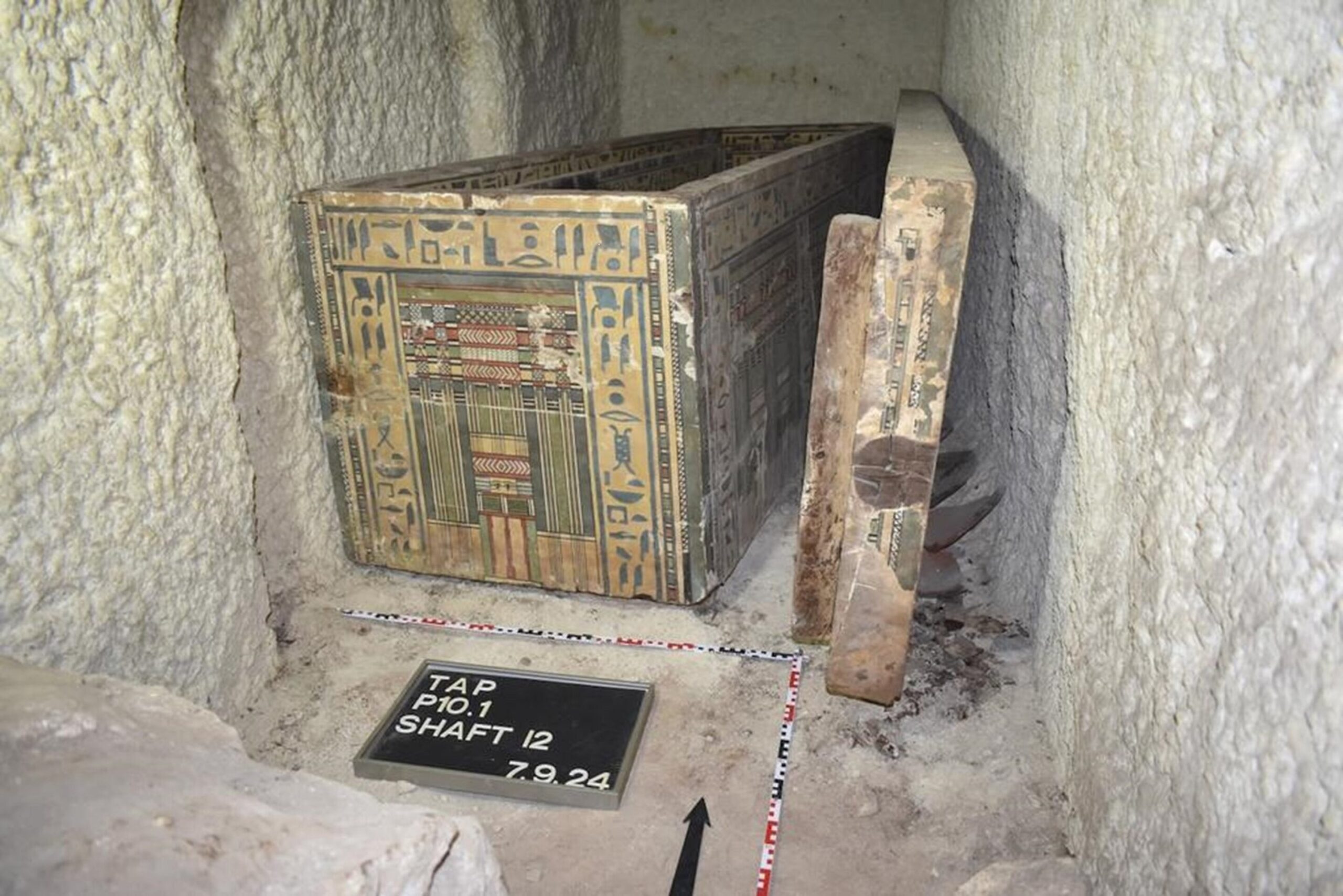An international team of archaeologists, led by Professor Jochem Kahl from Freie Universität Berlin, has made a remarkable discovery in the ancient necropolis of Asyut, Egypt. After twenty years of excavation work, researchers uncovered the burial chamber of Idy, a high-status priestess and daughter of the regional governor Djefaihapi I. This burial site, located within a previously inaccessible section of Djefaihapi I’s monumental tomb, dates back to around 1880 BCE and is hailed as one of the most significant discoveries in recent Egyptian archaeology.
The newly uncovered chamber was concealed within a vertical shaft approximately fourteen meters deep and blocked off by a quarry stone wall. Idy’s burial had remained undisturbed for millennia until tomb robbers breached it in antiquity. Despite this ancient looting, many of Idy’s grave goods remained intact, offering invaluable insights into the religious and social roles of women in Egypt’s Middle Kingdom period.
Inscriptions on her coffins reveal that Idy was a priestess of Hathor, the Egyptian goddess of love, music, and motherhood. She also held the title “Lady of the House,” a term signifying her prominent family lineage. Her father, Djefaihapi I, was an influential governor, and his immense rock-cut tomb is among the most elaborately decorated and well-preserved from the Middle Kingdom era. This title and her association with Hathor imply not only religious responsibilities but also a high social standing in the region.
One of the most extraordinary finds in Idy’s chamber was a pair of intricately decorated wooden coffins, one nested within the other. The coffins, made of imported wood, display elaborate paintings and texts both on the interior and exterior, which is uncommon even among high-status burials of the period. The illustrations and hieroglyphic inscriptions depict Idy’s anticipated journey through the afterlife and convey the religious beliefs and protective spells intended to ensure her safe passage. These coffin texts include excerpts from Egypt’s famed Coffin Texts, a collection of funerary spells and incantations used to guide the dead, along with detailed offering lists and titles. The level of detail and quality in the artwork on her coffins exceeds that of comparable artifacts from this time, suggesting that Idy’s family commissioned skilled artisans and imported materials to honor her position.
In addition to the coffins, Idy’s burial chamber contained a range of grave goods. Among these were wooden figurines, a ceremonial dagger, and various pharaonic insignia. An inscribed chest in the chamber held her canopic jars, which were used to store vital organs—such as her liver, lungs, spleen, and intestines—during the mummification process. The preservation of these jars provides further insights into Egyptian burial practices and the essential components of mummification in the Middle Kingdom. The presence of food offerings in her tomb also underscores the ancient Egyptian belief that sustenance would be required in the afterlife.
Other finds include remnants of Idy’s garments and her skeletal remains, which were partially damaged by looters. Preliminary examinations indicate that Idy was around forty years old at the time of her death. Analysis of her bones offers clues about her life and health, revealing aspects of diet, physical activity, and perhaps medical conditions she may have faced. These findings add a human dimension to our understanding of her role and existence within ancient Egyptian society.
The excavation and study of Idy’s burial were part of the eighteenth fieldwork season organized by the Institute of Egyptology at Freie Universität Berlin, in partnership with Sohag University in Egypt, Kanazawa University in Japan, and the Polish Academy of Sciences. The team’s interdisciplinary approach enabled a meticulous examination of the burial artifacts, with conservators ensuring the stability of wooden objects in the tomb before the artifacts were formally handed over to Egypt’s Ministry of Antiquities and Tourism for preservation and public display.
Idy’s father, Djefaihapi I, was a revered figure in ancient Egypt, with his tomb serving as a cultural and religious landmark for over two millennia. His tomb, an impressive structure cut into the rock, spans approximately eleven meters in height, twenty-eight meters in depth, and seventy meters in width. The walls of his burial chamber are adorned with vibrant paintings and intricate relief inscriptions that reflect both the artistic achievements and religious practices of the Middle Kingdom. Djefaihapi’s role as a governor and his posthumous worship highlight his influence and lasting significance within Egyptian history, as he was remembered as a noble and pious figure who maintained the prosperity and religious dedication of Asyut.
This discovery of Idy’s chamber not only enhances our understanding of burial customs for prominent families in ancient Egypt but also sheds light on the societal position and religious roles of women. The elaborate funerary texts, titles, and items in her burial suggest that high-ranking women like Idy had an essential place within the spiritual and social framework of their time. The findings promise to deepen our knowledge of how religious authority and family heritage intertwined in Middle Kingdom Egypt and offer fresh perspectives on women’s roles in ancient Egyptian ritual and administration.
Source: Free University of Berlin
